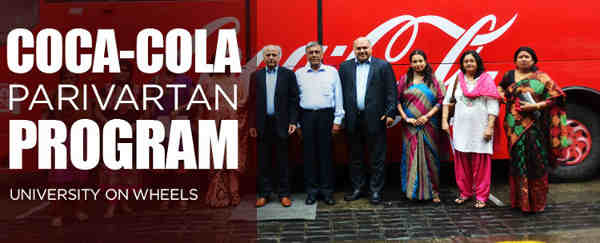Coca-Cola Releases Water Footprint Report
The Coca-Cola Company and The Nature Conservancy have released a water footprint report in conjunction with World Water Week in Stockholm, Sweden.
The report, entitled “Product Water Footprint Assessments: Practical Application in Corporate Water Stewardship,” examines three pilot studies that were conducted on Coca-Cola products and ingredients. It was released Wednesday, September 8.
Also Read:
Coca-Cola Says America Is Your Park
Whirlpool Manufacturing Facility to Add Jobs
Brown Shoe Offers Green Footwear to Women
Scientists Working to Forecast Weather in Space
A product water footprint is the total volume of freshwater consumed, directly and indirectly, to produce a product. A full water footprint assessment considers the impacts of this water consumption on local watersheds, as well as appropriate response strategies to minimize those impacts.
According to Coca-Cola, water footprint assessments can be helpful in supporting corporate water stewardship efforts by providing a tool to measure and understand water use throughout the supply chain.
They provide valuable insight into the largest components and locations of water consumption, the potential effects on local watersheds, and future water availability to serve the collective needs of communities, nature, producers, suppliers and companies.
Research found that the value of a product water footprint is its ability to disaggregate water use by component, allowing both direct and indirect water use to be examined, as well as the different types of water that are used.
The types of water are green water, which is rainwater stored in the soil as moisture; blue water, which is surface and ground water; and grey water, which is the volume of freshwater required to assimilate pollutants based on existing ambient water quality standards.
Keeping the components of a water footprint separate allows impacts to be assessed in the context of local watersheds where the water is being sourced.
The Company and the Conservancy found that the largest portion of the product water footprints assessed in the pilot studies comes from the field, not the factory.
“We see significant opportunity to engage more directly with our agricultural suppliers to advance sustainable water use for the cultivation of ingredients in our supply chain,” said Denise Knight, Water and Sustainable Agriculture director, The Coca-Cola Company. “Our initial efforts will focus on the sustainable sourcing of sugarcane, oranges and corn.”
Although the operational water footprint was found to be a very small percentage of the total water footprint, both organizations say it remains important for businesses to manage their direct impacts on local water resources, particularly with regard to wastewater treatment.
To analyze the impacts of water use, the report indicates the volume of water consumption must be placed in the context of a local watershed, where the cumulative effect of all uses of the shared water resource can be considered.
To this end, the report stresses the importance of conducting an impacts assessment that examines the Company’s water use and its relationship to the communities where it operates.
In partnership with third-party researchers, the Company and the Conservancy calculated the water footprints of Coca-Cola in a 0.5 liter PET bottle produced by Coca-Cola Enterprises Inc. (CCE) in the Netherlands; beet sugar supplied to Coca-Cola bottling plants in Europe; and Minute Maid orange juice and Simply Orange produced for the North American market.
Estimates are that the green water footprint of the 0.5 liter Coca-Cola beverage is 15 liters; the blue water footprint is 1 liter; and the grey water footprint is 12 liters.
The average green water footprint for sugar from sugar beets across all regions of Europe is estimated to be 375 liters/kg sugar; the average blue water footprint is 54 liters/kg sugar; and the average grey water footprint is 128 liters/kg sugar.
The size and color composition of the water footprint varies depending on the region from which the beets are sourced.
“More important than the numbers associated with a water footprint are the impacts of water use,” said Brian Richter, Freshwater Program co-director, The Nature Conservancy.
“When properly managed, even large volumes of water use can be sustainable in locations where the resource is sufficient to support the use and sustain ecological health. The number associated with a water footprint is not the end game, but rather a starting point to addressing the sustainability of the water source.”
Water footprints are helping to inform The Coca-Cola Company’s approach to global water stewardship.





